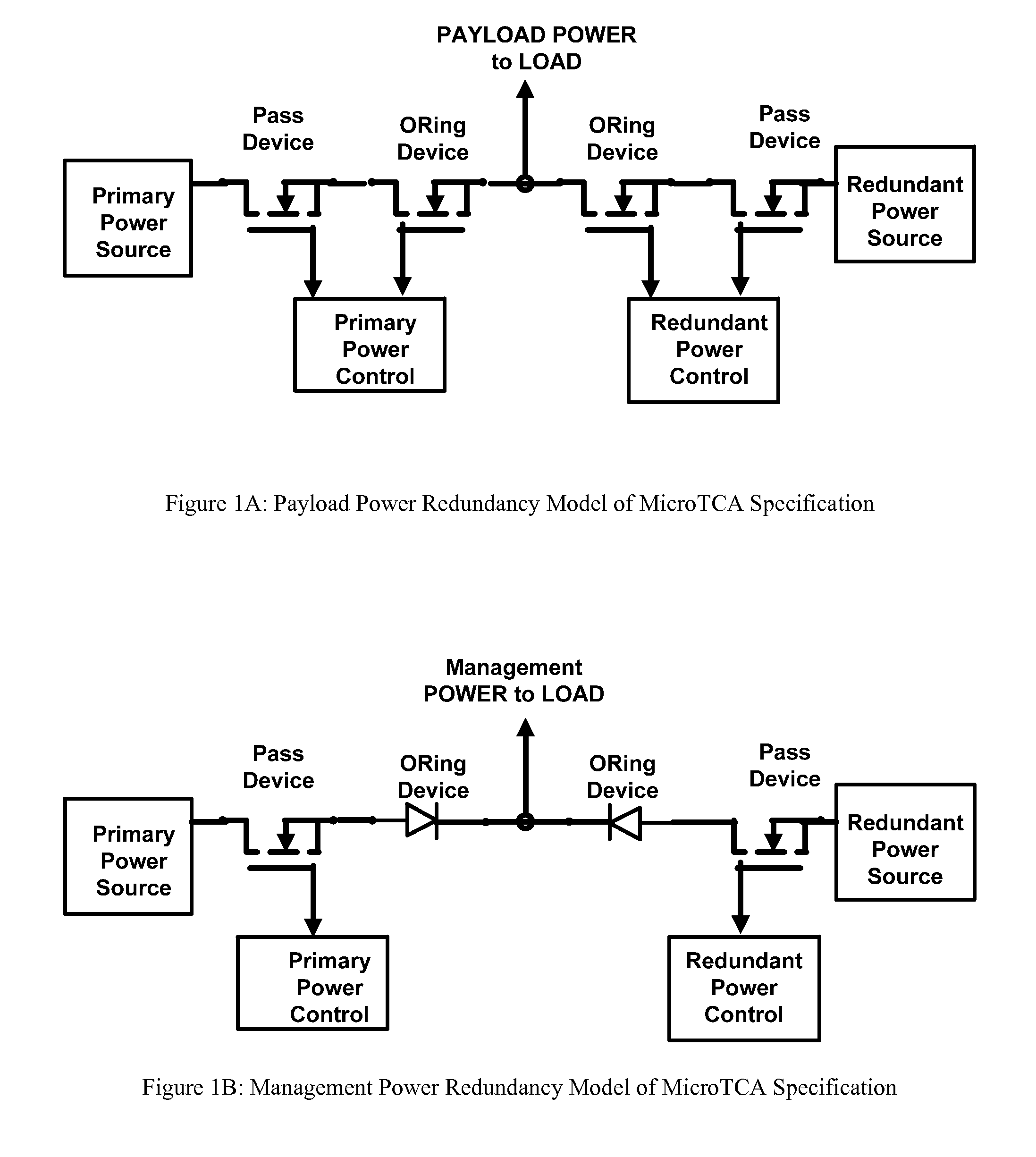Redundant power supply architecture with voltage level range based load switching
a power supply and voltage level range technology, applied in the direction of dc source parallel operation, pulse technique, transportation and packaging, etc., can solve the problems of increasing reducing the inherent reliability and conversion efficiency of the regulated power supply, and general inefficiency of the linear regulator, so as to reduce the number of parts, reduce the cost and complexity of the power supply, and reduce the effect of thermal loss
- Summary
- Abstract
- Description
- Claims
- Application Information
AI Technical Summary
Benefits of technology
Problems solved by technology
Method used
Image
Examples
Embodiment Construction
[0032]One embodiment of the present invention is schematically illustrated in the FIG. 2A. Power supplies A and B are isolated DC to DC converter. The power supplies A and B connected on the input side to a wide range input DC source of 36 Volts to 75 Volts. At the output side the Power supplies A and B are electrically coupled via a well known P Channel FETs to a load L1 and load L2, to provide redundancy and back up for loads L1 and load L2. The output of each power supply is FED back to the input side of each power supply to control PWM via a Output Voltage Controller (OVC). The Input of each power supply is also connected to each OVC. The controls of each OVC circuit are connected to the respective Power Module Controller. Discreet control pins A and B are provided for non controller based control of the OVC operation.
[0033]In regard to the present invention, the precise level of regulation of both of the power supplies is unimportant to provide active redundancy. What is import...
PUM
 Login to View More
Login to View More Abstract
Description
Claims
Application Information
 Login to View More
Login to View More - R&D
- Intellectual Property
- Life Sciences
- Materials
- Tech Scout
- Unparalleled Data Quality
- Higher Quality Content
- 60% Fewer Hallucinations
Browse by: Latest US Patents, China's latest patents, Technical Efficacy Thesaurus, Application Domain, Technology Topic, Popular Technical Reports.
© 2025 PatSnap. All rights reserved.Legal|Privacy policy|Modern Slavery Act Transparency Statement|Sitemap|About US| Contact US: help@patsnap.com



